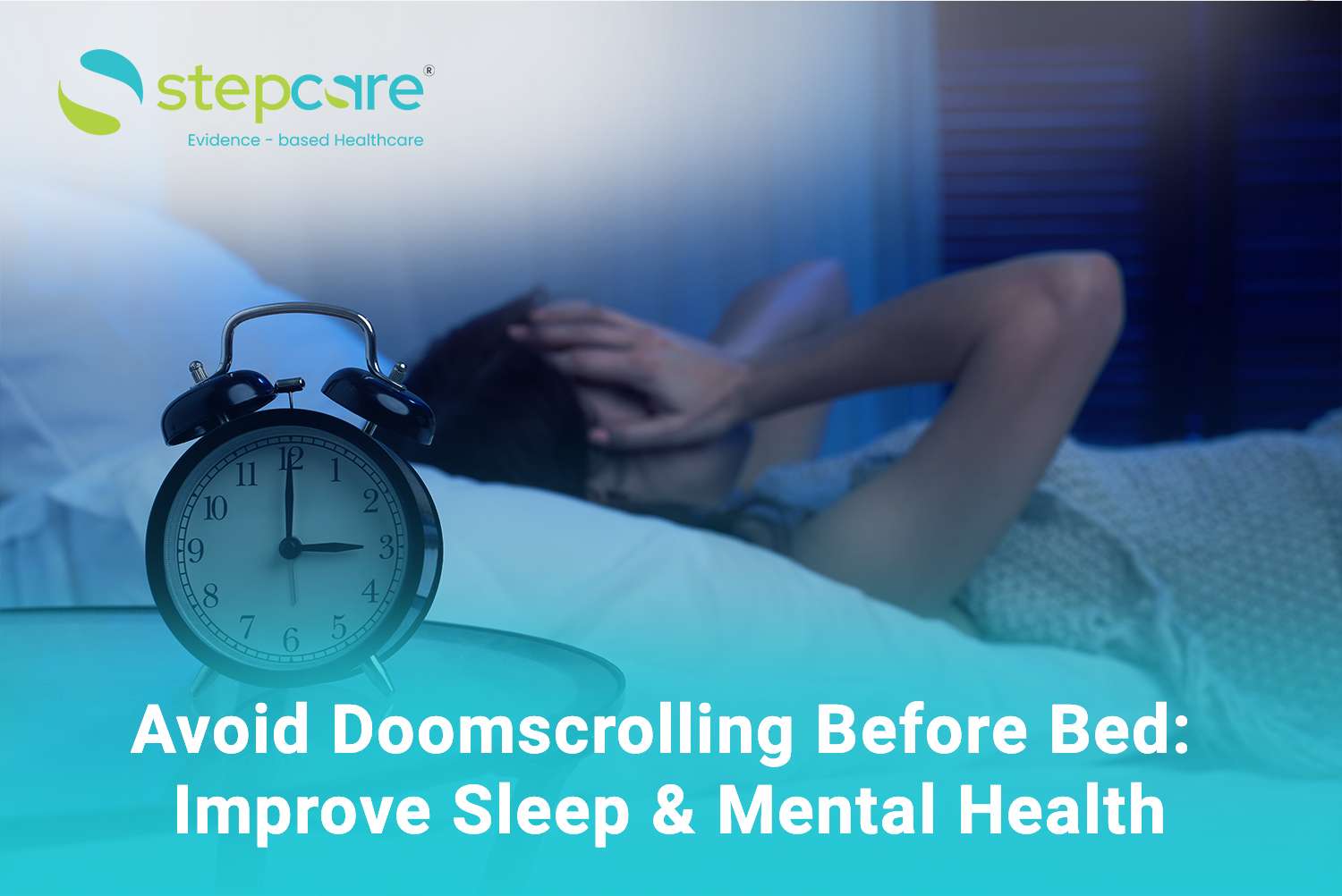
- Stepcare’s mission is to help you achieve optimal health and well-being, not just for your benefit but for ours too - because we believe that a healthy you is a win-win situation for both you and Stepcare

Stepcare delivers personalised, evidence-based, and preventative healthcare that prioritises patient well-being and promotes healthier living.
G-01, Ground floor, Brigade IRV Center, Nallurhalli, Whitefield, Bengaluru, Karnataka, 560066
Subscribe for newsletter

It’s late at night. You tell yourself you’ll check your phone for a few minutes before bed. But one post leads to another, and soon you’re scrolling through news, social media, and videos for hours. Instead of winding down, your mind feels restless and overwhelmed. This pattern has become so common that it now has a name: doomscrolling.
While scrolling itself isn’t harmful, doomscrolling before bed has been linked to poor sleep, heightened anxiety, and declining mental well-being. Understanding the science behind doomscrolling and sleep can help us break free from it and reclaim restful nights.
The term “doomscrolling” became widely used during the COVID-19 pandemic, when people were glued to their screens for constant updates on infection rates, lockdowns, and global uncertainty. It refers to the compulsive consumption of negative or anxiety-inducing online content, often late at night.
Unlike casual browsing, doomscrolling is:
Many people struggling with doomscrolling anxiety notice that their late-night habits directly impact not just sleep, but also their overall mental health.
Research has shown a strong link between screen use at night and sleep disturbances. Doomscrolling combines two powerful sleep disruptors: screen exposure and emotional arousal.
Smartphones and tablets emit blue light, which interferes with the body’s production of melatonin, the hormone that regulates the sleep–wake cycle. A study from Harvard Medical School found that blue light exposure at night delays melatonin release, making it harder to fall asleep and reducing overall sleep quality.
Doomscrolling anxiety usually involves consuming emotionally charged content, from distressing news to heated online debates. This keeps the brain in a state of hyperarousal. The American Academy of Sleep Medicine (2020) noted that heightened emotional arousal before bedtime makes it difficult to enter deep, restorative sleep stages.
Instead of calming the mind, negative content fuels worry loops. You might start thinking, “What if this happens to me?” or “How will things ever improve?” A 2022 study in Sleep Health Journal found that pre-sleep worry is a major predictor of insomnia symptoms. Doomscrolling anxiety essentially feeds this worry.
Poor sleep from doomscrolling doesn’t just reduce the hours of rest; it fragments the sleep cycle, especially REM sleep, which is crucial for emotional processing and memory. The National Sleep Foundation highlights that disrupted REM sleep increases irritability and reduces resilience to stress.
This shows why the link between doomscrolling and sleep needs serious attention. It is not only about rest but also about long-term mental health stability.
The link between doomscrolling, sleep, and mental health is bidirectional:
This creates a vicious cycle:
Anxiety leads to doomscrolling → doomscrolling disrupts sleep → poor sleep worsens anxiety → which in turn drives more doomscrolling.
You may wonder, “If doomscrolling makes me feel worse, why do I keep doing it?” The answer lies in how our brains are wired:
Recognizing these triggers is the first step in overcoming doomscrolling before bed and creating a healthier relationship with your devices.
The good news is that doomscrolling is a habit, and habits can be changed. Here are research-backed strategies to help break free:
1. Establish a “Digital Sunset”
2. Use Technology Wisely
3. Create a Relaxing Pre-Sleep Routine
4. Practice Content Hygiene
5. Address the Root Anxiety
6. Optimize Your Sleep Environment
Breaking free from doomscrolling before bed isn’t just about better sleep. It’s about building healthier coping mechanisms for stress and anxiety. When you learn to replace compulsive scrolling with restorative activities, you:
Doomscrolling and sleep don’t mix well. This habit may feel like a harmless habit or even a way to stay informed, but research shows that it comes at a cost: stolen sleep, heightened doomscrolling anxiety, and reduced emotional well-being. The cycle is fueled by our natural instincts and modern digital design, but with awareness and intentional habits, it can be broken.
The next time you find yourself endlessly scrolling at night, pause and ask: “Is this helping me rest, or stealing tomorrow’s peace?”
Sometimes, the kindest thing you can do for yourself is to set the phone aside and allow your mind the comfort of true rest. If breaking the cycle feels too heavy to manage alone, reaching out for Stepcare’s mental health services in Bangalore can give you the gentle guidance and caring support you deserve.




